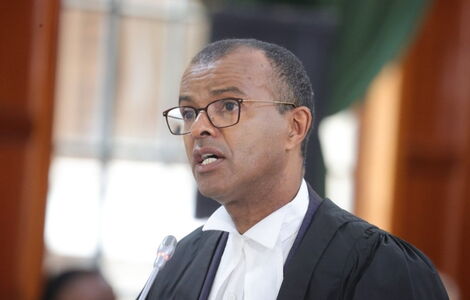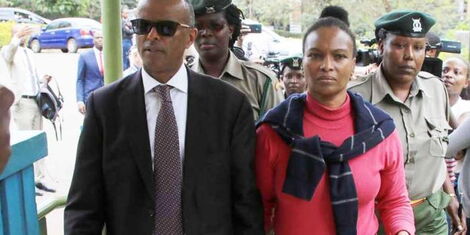-
An image of DPP Noordin Haji at a past press briefing. FACEBOOK
-
The Director of Public Prosecution (DPP), Noordin Haji applied to withdraw murder charges against Sarah Cohen on Tuesday, November 29.
Sarah was accused of killing her estranged husband, Tob Cohen, in September 2019.
In the statement sent to the High Court, Haji requested to halt her prosecution.
"I hereby enter a Nolle Prosequi (do not prosecute) and inform this Honourable court that the Republic intends that the criminal proceedings against the above-named persons,
 Senior Counsel Philip Murgor submitting his petition at the Supreme Court on August 31, 2022 FILE
Senior Counsel Philip Murgor submitting his petition at the Supreme Court on August 31, 2022 FILEWho are charged with the offense of murder contrary to section 203 as read with section 204 of the Penal Code, Laws of Kenya shall not continue," read part of the statement.
Speaking to Kenyans.co.ke, Sarah Cohen's lawyer, Senior Counsel, Philip Murgor, confirmed the intention to drop the case and lauded the ODPP for heeding his call.
"We saw the intent to drop the case, and we asked for correspondence of the same. The case is as good as dropped. ODPP will now launch an inquest," Murgor stated.
Sarah had earlier appealed for the murder charges against her to be dropped after incriminating evidence was presented against former Director of Criminal Investigations (DCI) George Kinoti.
She demanded fresh investigations into the case. Through her lawyer, Sarah argued the new evidence would be key to guaranteeing justice.
Notably, the former DCI was accused of tampering with the case, by coercing the DCI detective to sign a fake affidavit that painted Sarah as the prime suspect.
Additionally, former Inspector General Hillary Mutyambai's retirement was also used to call for fresh investigations.
"We have requested that the mentioned politicians also be subjected to investigations on their roles in the disappearance and death of the deceased and their persistent role in attempting to disinherit our client," the lawyer demanded.
The DPP also applied to drop the murder charges against Public Service Cabinet Secretary, Aisha Jumwa.
 Prime suspect in Tob Cohen's murder Sarah Cohen and her lawyer Philip Murgor in court on October 3, 2019. FACEBOOK
Prime suspect in Tob Cohen's murder Sarah Cohen and her lawyer Philip Murgor in court on October 3, 2019. FACEBOOK






